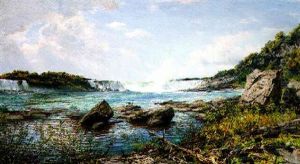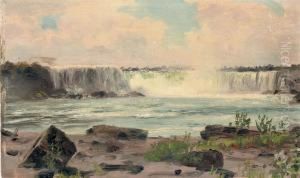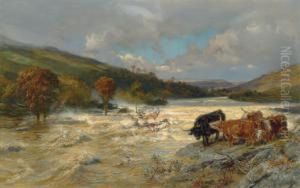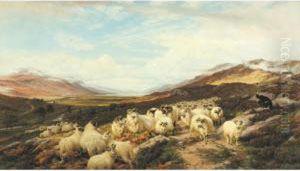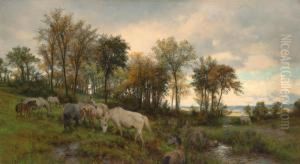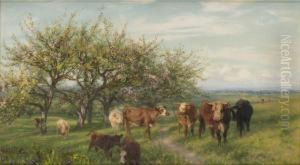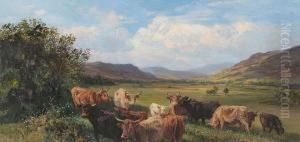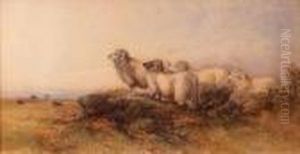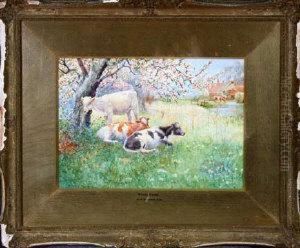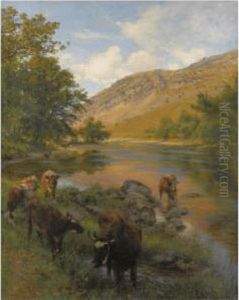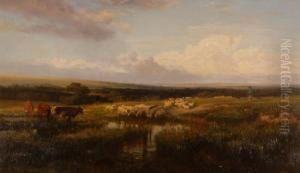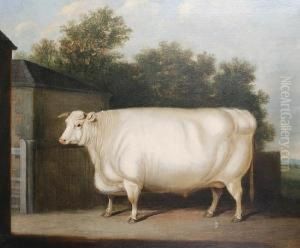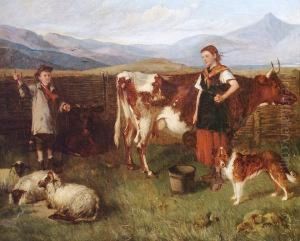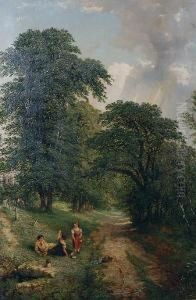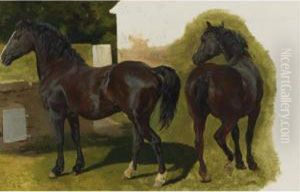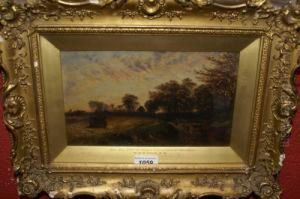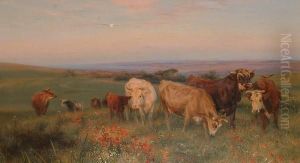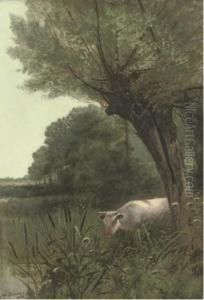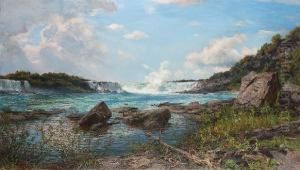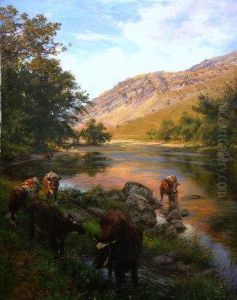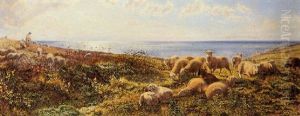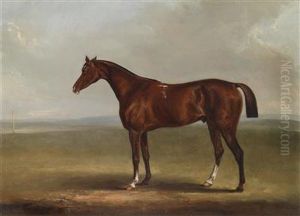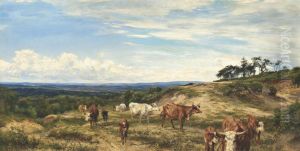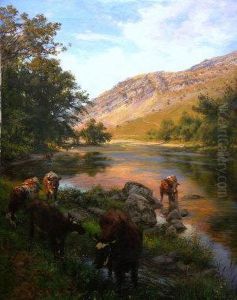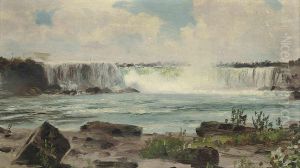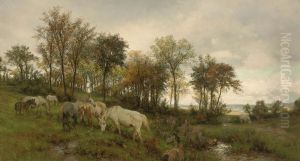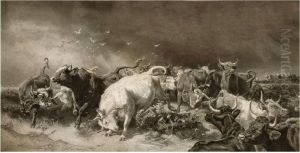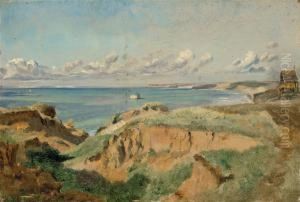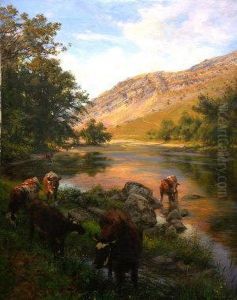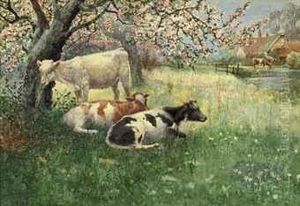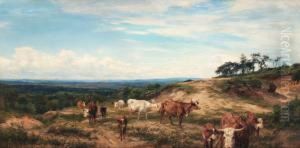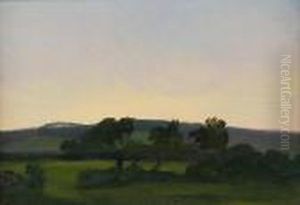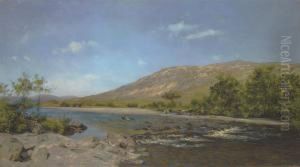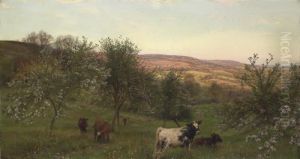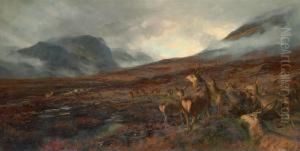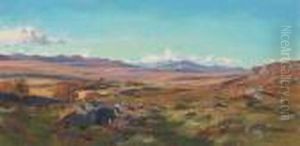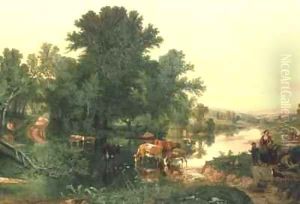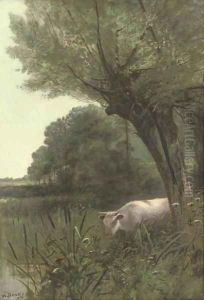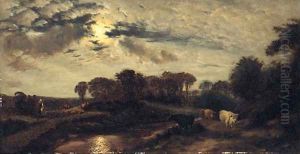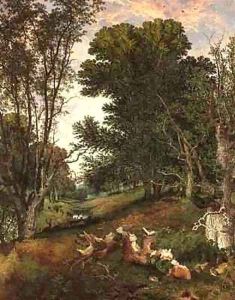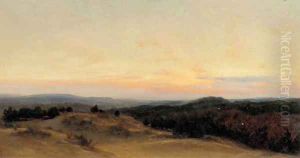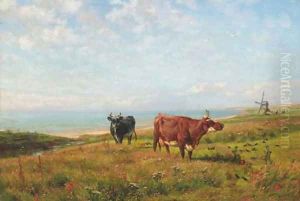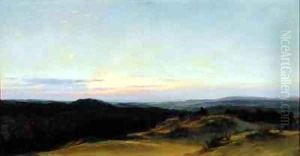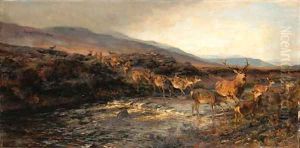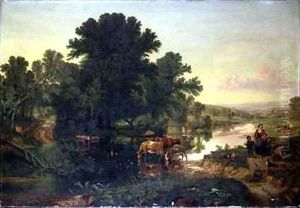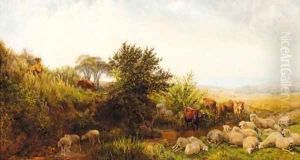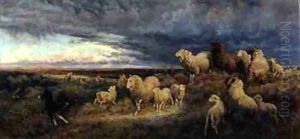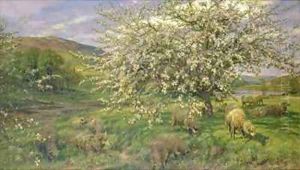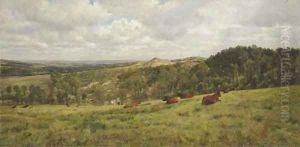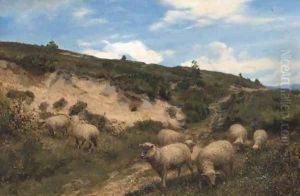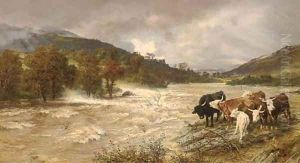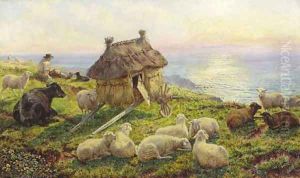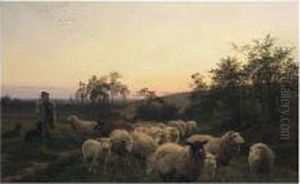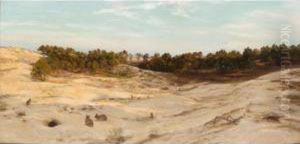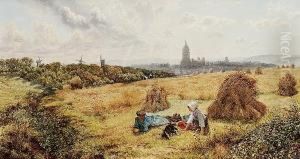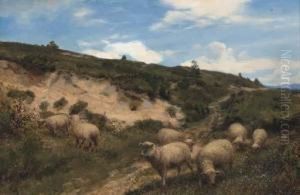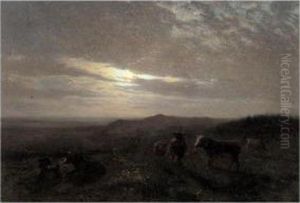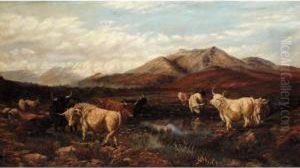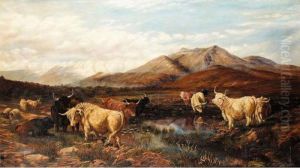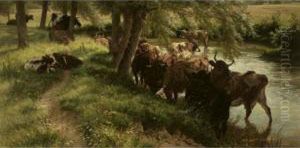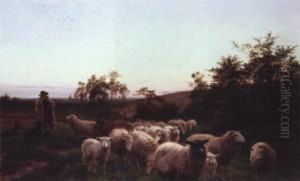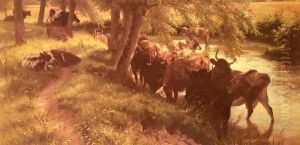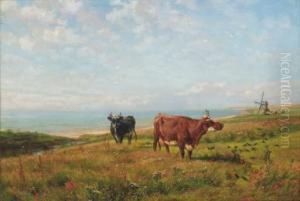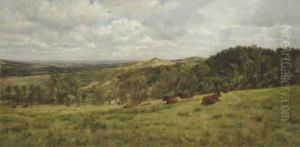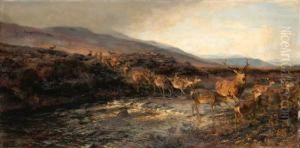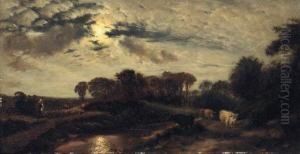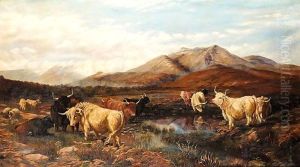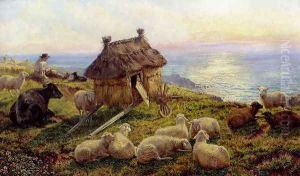Henry William Banks Davis, R.A. Paintings
Henry William Banks Davis, R.A. (Royal Academy), was a prominent British landscape painter known for his pastoral scenes, often featuring cattle. He was born on January 14, 1833, in Finchley, a suburb of London, England. His artistic talent became apparent at a young age, leading him to pursue formal training. Davis studied at the Royal Academy Schools in London, where he honed his skills in painting and drawing.
During his career, Davis exhibited extensively, including regular showings at the Royal Academy from 1854 onwards. His work was well-received, and he quickly gained recognition for his ability to capture the British countryside with a serene and idyllic quality. Davis's paintings often depicted the rural landscapes of England and Wales, filled with grazing cattle and suffused with a soft, natural light. These peaceful scenes resonated with Victorian audiences, who were drawn to the tranquility of rural life as an escape from the industrialization and urbanization of the era.
In 1873, Davis was elected as an Associate of the Royal Academy (A.R.A.), and later achieved full membership as a Royal Academician (R.A.) in 1877. This prestigious honor reflected his standing within the British art community and acknowledged his contributions to the field of landscape painting. Throughout his life, Davis remained active in the Royal Academy, participating in exhibitions and supporting the institution's mission.
Davis's style was influenced by the work of earlier British landscape painters, such as John Constable, as well as the pastoral scenes of French artists like Jean-Baptiste-Camille Corot. However, he developed his own distinctive approach, characterized by a delicate treatment of light and a meticulous attention to detail. His work often featured a harmonious blend of realism and idealization, which became a hallmark of his paintings.
Henry William Banks Davis continued to paint until the end of his life, with his artistic output remaining consistent in both quality and theme. He passed away on June 22, 1914, leaving behind a legacy as one of the key figures in British landscape painting during the late 19th and early 20th centuries. His artworks continue to be appreciated for their beauty and craftsmanship, and they can be found in various art collections and museums around the world.
